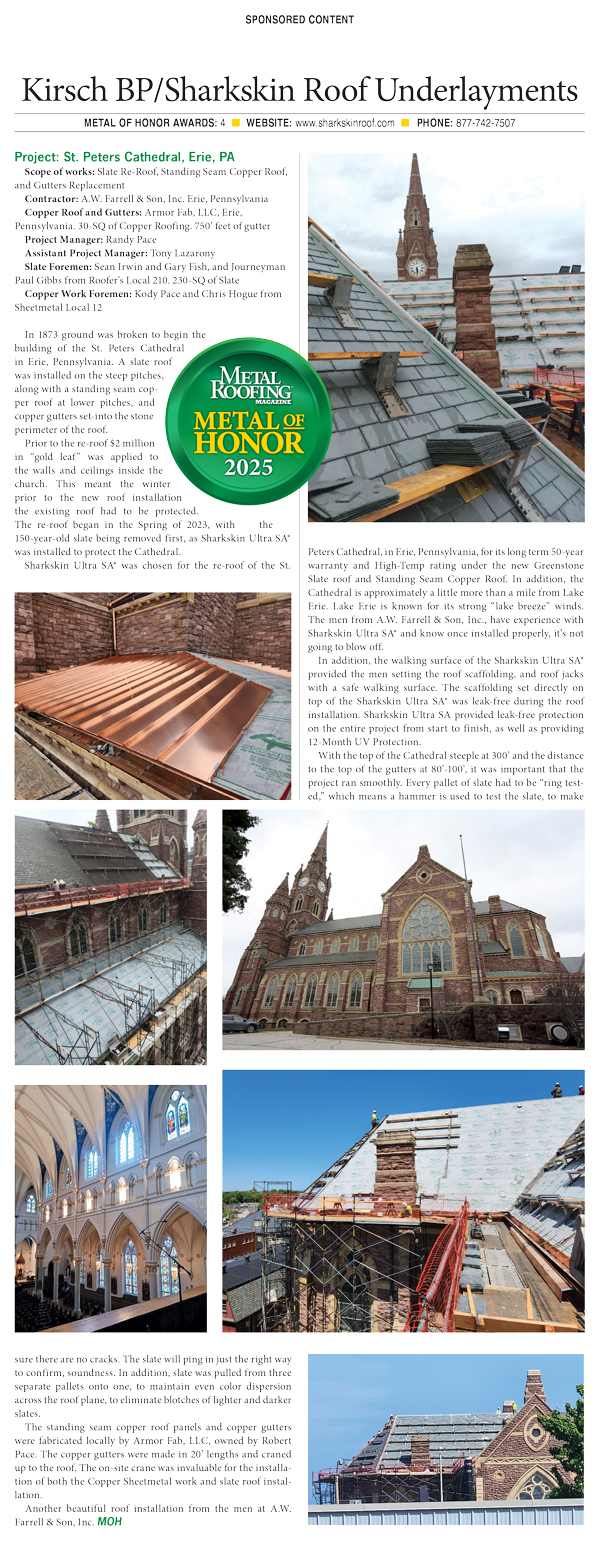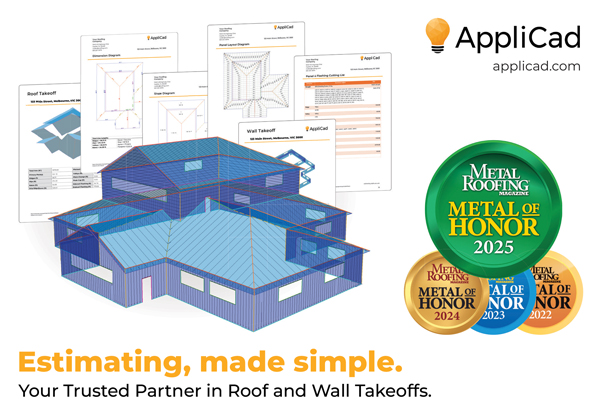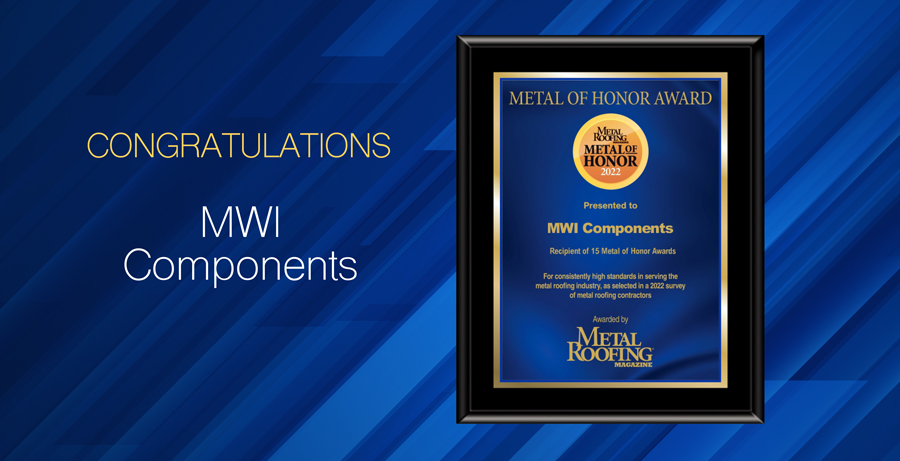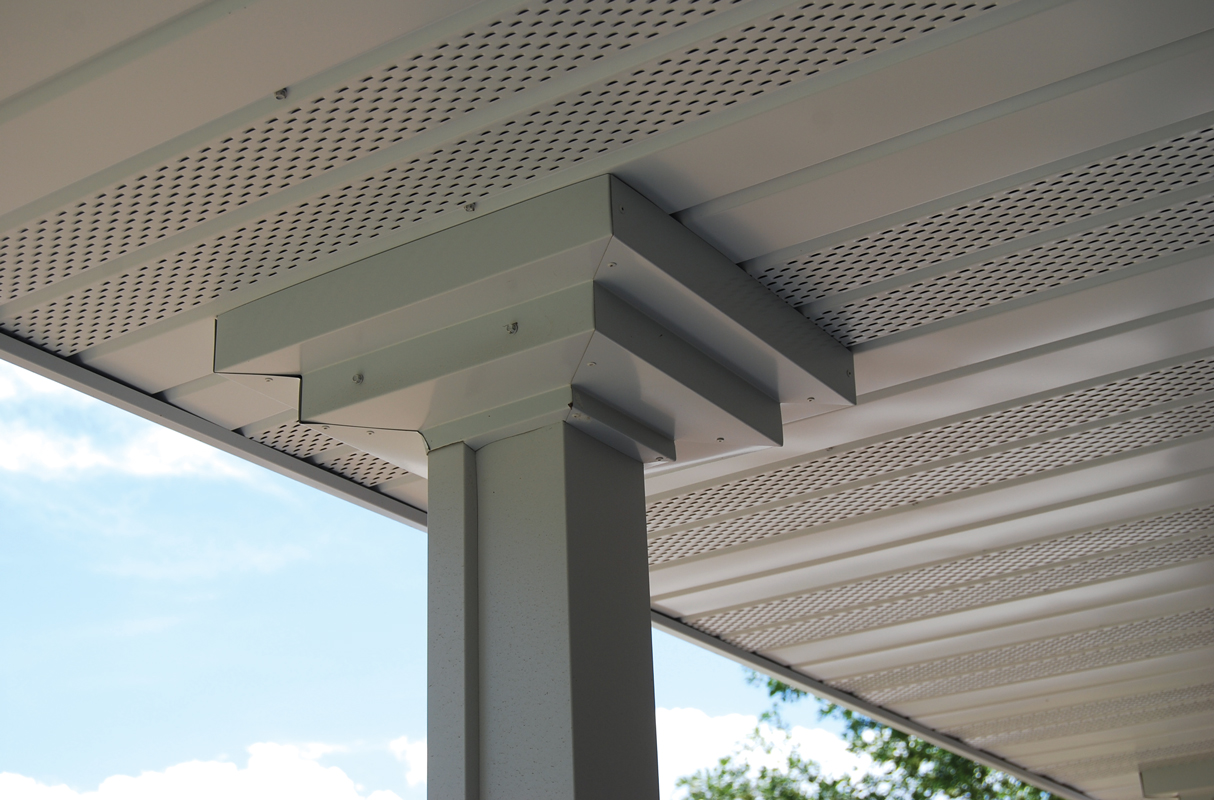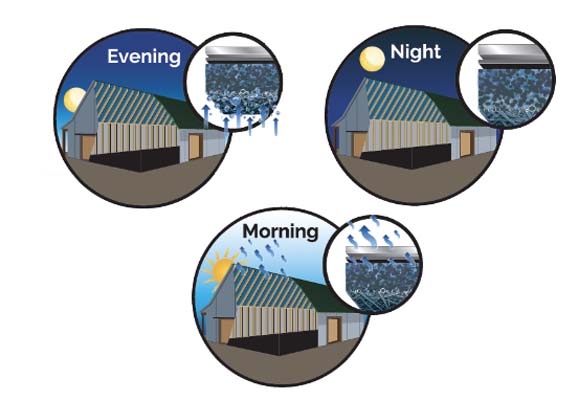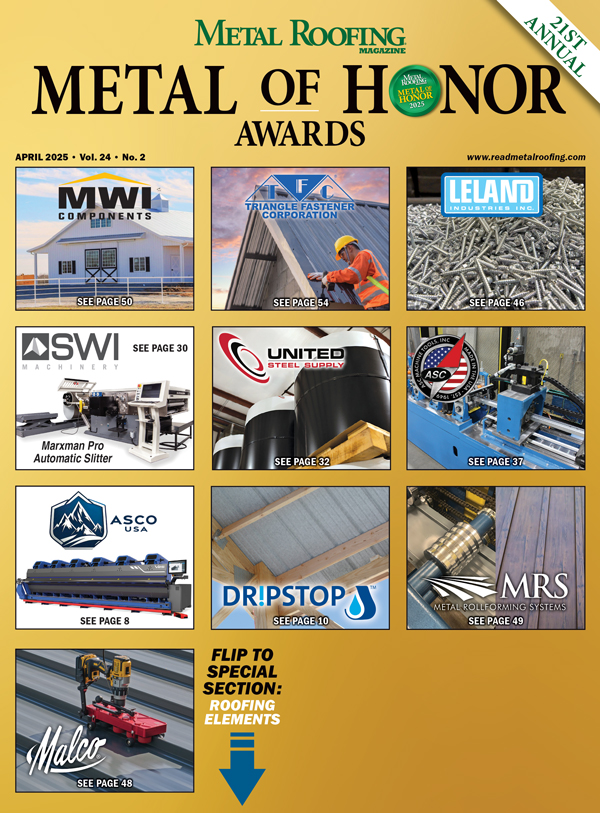We asked manufacturers and suppliers of roofing ventilation and moisture control products for their top recommendations when choosing and sourcing these items, as well as for general tips for their installation. Here is the information they provided:

Two important aspects metal roofing contractors should consider when choosing and sourcing ventilation and moisture control products:
• The time to talk about moisture control and ventilation is before construction. Afterward, solutions are limited and can become costly.
• Consider the area’s climate, building use/purpose, and building contents, both now and in the future. Ventilation and moisture control solutions will be dependent on these.
Two general tips or tricks that metal roofing contractors should know regarding the installation of ventilation and moisture control for metal roofing assemblies:
• Ventilation requires both “input” and “output” to work. Insufficient eave venting is a common problem.
• If powered ventilation is chosen, consider adding a hygrostat, which monitors humidity levels and activates the system as needed.
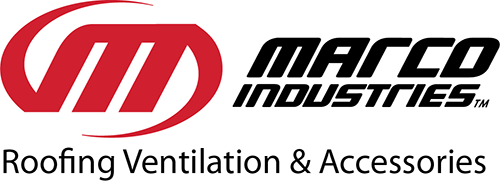
When choosing ventilation and moisture control products, roofing contractors should follow these guidelines:
• You must correctly calculate the amount of ventilation required for the application (based on local building code requirements), then determine the best ventilation product to use based on that calculation.
• The slope and layout of the roof are important. Make sure the ventilation product you choose is acceptable for your roof slope. Some metal roofs are approved for low slopes and these sometimes require special ventilation considerations. Hip roofs can be tough to get adequate ex-take ventilation on due to the lack of ridge at the top of the roof. Long, narrow structures with longer ridges are good candidates to add too much ex-take ventilation.
The top two installation problems to be aware of are:
• Not calculating the ventilation required correctly, or choosing an incorrect ventilation product, can lead to an imbalance in the intake/exhaust, stifling the airflow. This stagnant air will cause an eventual moisture buildup in the attic, which can then lead to mold and other expensive costs—up to and including replacement of the current roof system.
• Avoid too much ex-take ventilation for the amount of intake. This can turn your ex-take products into intake instead. Spend the extra time it takes to calculate the ex-take needs properly based on attic space and specifications of your intake vents.
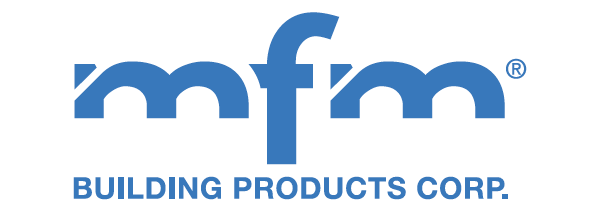
Our general tips for ventilation and moisture control are brief, but still very important:
• When using a self-adhered underlayment, remember that these are also air and moisture barriers—you have to allow for proper ventilation of the roof deck when using these types of underlayments.
• Proper ventilation of the roof deck will extend the service life of any underlayment that is applied under metal roofing systems.

Regarding ventilation and moisture control for metal roofing, our recommendations are:
• Proper ridge ventilation and the use of foil insulation are preventative measures worth exploring when considering moisture control. The relationship between intake and exhaust is crucial with relation to moisture control.
• Always consider the intake-to-exhaust relationship; in the event the intake and exhaust are not equivalent, a slightly larger intake than exhaust is preferred.
When installing ventilation and moisture control products, refer to these tips:
• One should always consider the architectural specifications with respect to building size and scope, as every build is different.
• Avoid the thought process that “bigger is better”—always aim to match the ventilation system to your building’s needs and consult an expert if you are unsure. For example, improper use of a high-profile ventilator/ridge vent on a building that does not require a high-profile ridge vent can lead to the suction of elements (snow, rain, etc.) into the building through the ridge, causing moisture concerns and possible damage.
• It’s also important to note/be aware that foil insulation is a useful (yet inexpensive) vapor barrier. Because traditional insulation absorbs heat, it also absorbs moisture. This reduces the R-value over time as traditional insulation compresses from moisture. Meanwhile, foil insulation utilizes reflectivity rather than absorption.
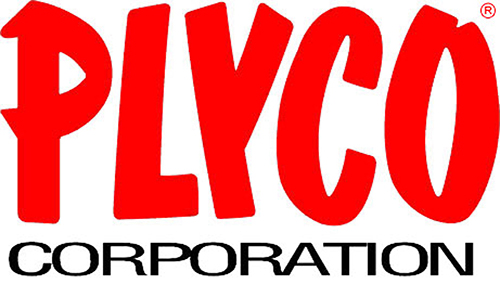
Essential considerations for choosing and sourcing ventilation and moisture control products:
• Proper ventilation is critical but it is not a “one size fits all” situation. The building end use, temperature regulation needs, and air quality requirements are all important in determining the amount of airflow required.
• There are a number of ways to improve airflow and ventilation, so typical roofing products such as ridge vents and cupolas should be considered in conjunction with doors (walk doors, slide doors, and overhead doors), windows, wall louvers, and mechanical ventilation products.
Tips for the proper installation of ventilation and moisture control products:
• For proper flow of air out of the ridge vent, equal amounts of make-up (intake) air must be provided into the attic or building. We recommend soffit vents, louvers, or windows spaced along both sides of the building to provide make-up air year-round.
• Use simple calculations to determine the amount of airflow needed. Then ensure you size the products to match, verifying the length, width, and height, as these measurements will determine the airflow.

Important factors to note when choosing ventilation and moisture control products:
• The ventilation concerns of residences are greater than the typical concerns of larger structures. You can “get by” with ventilation in buildings with large open spaces and lots of air movement, but you can’t do that with residences.
• The stakes are high. Houses are “tighter” than ever before, increasing the need for ventilation. If you sell a roof for a home, you really need to concern yourself with ventilation—make it clear to the property owner if they have potential concerns, and give them options to rectify those concerns.
General tips for the installation of ventilation and moisture control for metal roofing assemblies:
• Ridge vents are common leak points on roofs and must be firmly sealed to the roof system.
• Having inadequate intake vents in the attic can cause ridge vents to work in reverse, actually drawing in air and weather—never a good thing.

Regarding the importance of ventilation and moisture control products:
• Condensation can become a problem during the colder months if you don’t have the necessary attic vents. This can lead to a range of issues including stained ceilings, mold, and structural damage to the rafters and trusses. The roof decking may swell, buckle, or rot, reducing the amount of weight it can bear. Excessive moisture can also lead to poor indoor air quality, which can result in respiratory issues.
• Reduce the likelihood of ice dams, which form at the edge of the roof and prevent melting snow from flowing off the roof. Ice dams occur when the higher parts of the roof are warmer than the lower parts. To prevent ice dams, you need metal roof ventilation that balances the temperatures on the interior and exterior of the home.
• The longevity of a roof depends on more than the roofing that is chosen. Regardless of whether in a warm climate or a cold one, you need to ensure that the roof ventilation is up to par. Vents allow fresh air into the attic and let stale air out. With proper ventilation, not only will the roof last longer, but many of the interior and exterior issues that result from poor ventilation can be avoided.


